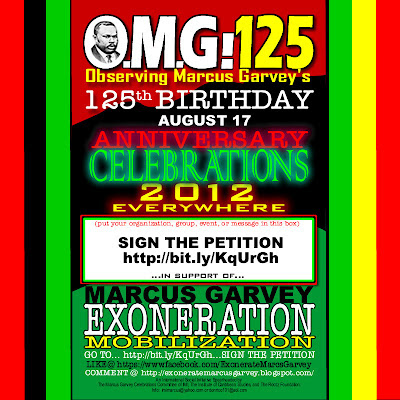Harvesting the Creative Reservoir of our Cultural Community
By Marva McClean
Dreams do take you to far-away places! More than a
decade ago, Rosie Gordon-Wallace launched Diaspora Vibe Gallery at the BakeHouse
Studio in 1996. What began as a six-month program for emerging artists has now
evolved into a yearlong, incubator space, nurturing, celebrating, and affirming
the work of artists throughout the Diaspora. Today, Diaspora Vibe Cultural Arts
Incubator has evolved into a platform of multiple levels, including a web
village, incubator space and international forum. This has been made possible
through the commitment and dedication of both the artists themselves and a group
of community stakeholders who have joined the organization in harvesting the
creative reservoir of our cultural community.
Throughout the years, Diaspora Vibe has showcased
the work of outstanding artists such as Patricia Roldan of Florida, Nicole
Wynter of Jamaica, Asser Saint Val of Haiti, Paul Salva from Russia, Deborah
Jack from St. Maarten, Caroline Holder of Barbados, Jean Chiang of China, Wura
Ogunji of Nigerian and American heritage, Erman from Cuba and Brian Wong Won of
Trinidad, Kurt Nahar from Suriname, and Elvis Lopez from Aruba; all working in a
variety of artistic media that defy boundaries and typecasting.
The organization’s work has evolved to include
production of literature, which goes beyond the traditional collateral to
include articles and commentaries on our websites, artist portfolios, and
catalogs. Diaspora Vibe Cultural Arts Incubator has led artistic missions to
Grenada, St.
Kitts, Santo Domingo, Aruba, Puerto Rico, Bahamas,
Trinidad, Jamaica, and Puerto Rico and has introduced their patrons to an
eclectic mix of creative people, including authors.
Art in all its diverse forms allows us to tell our
story in our words and colors with vibrancy, etching in the nuances that speak
to heritage and our cultural identity; for it conveys our values and worldview.
With the support of our entrepreneurial team of board members, we have embarked
on some very successful fundraisers including Midnight Indulgences,
Dining4Diaspora, and Seize the Pen. In addition DVCAI has met with success in
securing funding from national foundations such as the Andy Warhol Foundation
for the Visual Arts, The Ford Foundation, Surdna Foundation, National Endowment
for the Arts, State of Florida Department of Cultural Affairs and Miami Dade
Department of Cultural Affairs.
As we celebrate Caribbean Heritage Month, I invite
you to join us as we continue to challenge society to open its mind to new ideas
concerning art and to assert the central role that Diasporic artists play in the
shaping of culture and the community. Let’s continue to focus our attention on
erasing any residual vestiges of elitism that has impacted the art movement.
Together we will work to enrich the history of art across the borders of Dade
County through to the state, national, and international levels. Art is what
holds the human race together. It speaks persuasively to the mind and spirit of
all of us, regardless of our location, disposition, race or gender. Art is truly
the magic of the mind.
For further information contact:
Rosie Gordon-Wallace, Ex. Director | Curator
Diaspora Vibe Cultural Arts Incubator, Inc
686 NE 56 St.
Miami Fl. 33137
786-536-7801
305-542-4277
rogwall3@yahoo.com
***Blog Disclosure Policy
Geoffrey Philp’s Blog Spot receives a percentage of the purchase price on anything you buy through links to Amazon, Shambala Books, Hay House, or any of the Google ads or Google Custom Search.
***
Disclaimer of Endorsement
The documents posted on this Web site may contain hypertext links or pointers to information created and maintained by other public and private organizations. These links and pointers are provided for visitors' convenience. I do not control or guarantee the accuracy, relevance, timeliness, or completeness of any linked information. Further, the inclusion of links or pointers to other Web sites or agencies is not intended to assign importance to those sites and the information contained therein, nor is it intended to endorse, recommend, or favor any views expressed, or commercial products or services offered on these outside sites, or the organizations sponsoring the sites, by trade name, trademark, manufacture, or otherwise.
Reference in this Web site to any specific commercial products, processes, or services, or the use of any trade, firm or corporation name is for the information and convenience of the site's visitors, and does not constitute endorsement, recommendation, or favoring by this blog.








